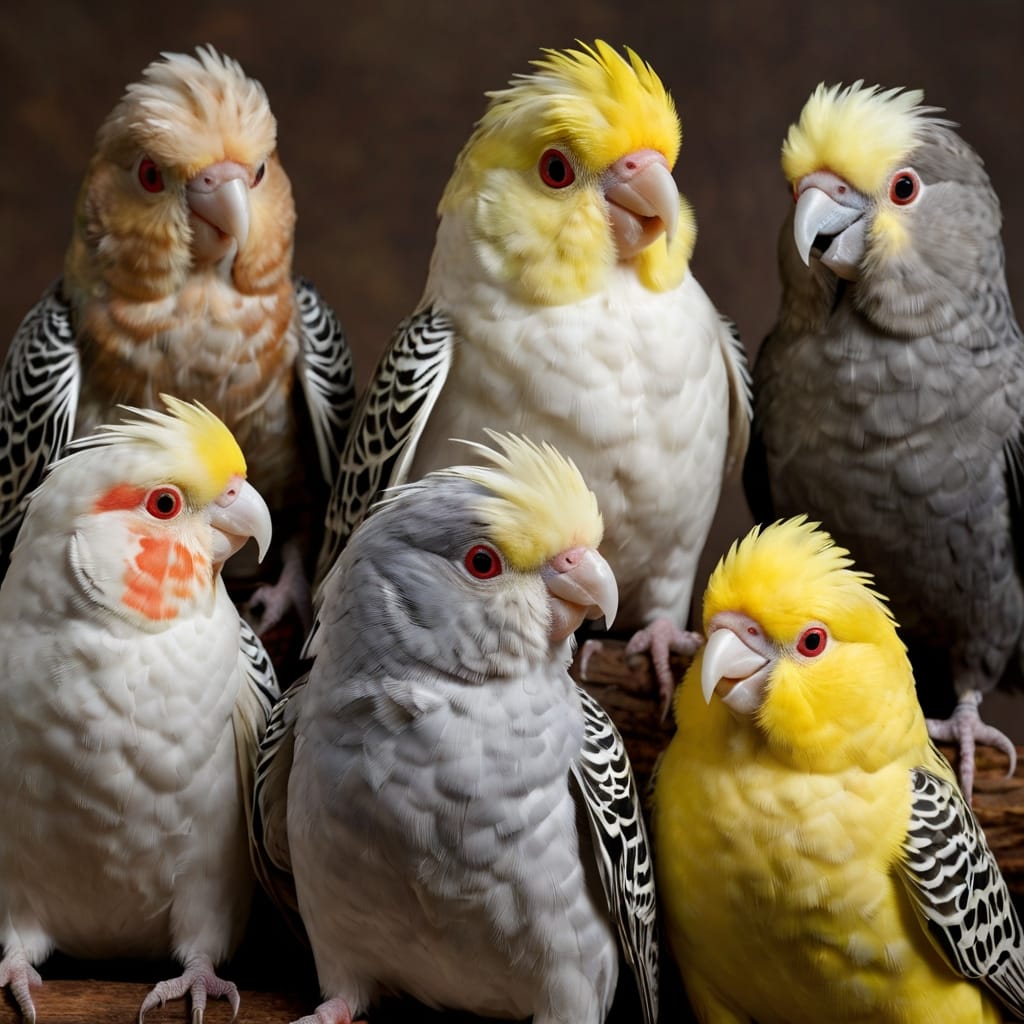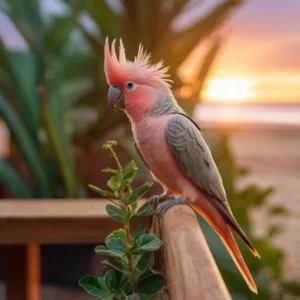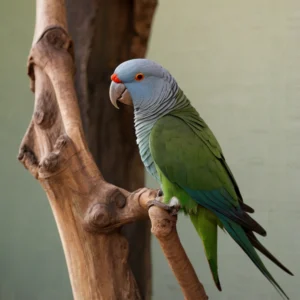Table of Contents:
- What Are Cockatiels?
- Cockatiel Origins and History
- Why Cockatiels Make Great Pets
- Cockatiel Personality and Behavior
- Cockatiel Appearance and Colors
- What Do Cockatiels Eat?
- How to Train a Cockatiel
- Common Cockatiel Health Issues
- Cockatiel Lifespan and Care Tips
- Do Cockatiels Need a Friend?
- Setting Up a Cockatiel Cage
- Cockatiel Sounds and Communication
- Interesting Facts About Cockatiels
1. What Are Cockatiels?
Cockatiels are small, friendly parrots native to Australia. They belong to the parrot family and are known for their charming crests and whistling abilities. Cockatiels are often chosen as pets due to their affectionate and gentle nature. These birds are small, typically measuring about 12-14 inches from beak to tail. Their intelligent and social personalities make them a favorite among bird enthusiasts. If you’re new to birds, a cockatiel is a perfect choice for you.
2. Cockatiel Origins and History
Cockatiels originate from the Australian outback, where they thrive in dry, open habitats. First discovered in the late 1700s, they quickly became popular pets worldwide due to their adaptability and friendly nature. Cockatiels have been bred in captivity for decades, resulting in a variety of colors and patterns. Their history as pets began in Europe and spread globally. Knowing their origins helps owners understand their natural instincts and needs.
3. Why Cockatiels Make Great Pets
Cockatiels make wonderful pets for families, singles, and even seniors. They are affectionate, easy to care for, and enjoy bonding with their owners. Cockatiels can learn tricks, mimic sounds, and whistle tunes, making them entertaining companions. They are also less demanding than larger parrots, requiring moderate care and attention. Whether you live in an apartment or a house, cockatiels can adapt well to their environment.
4. Cockatiel Personality and Behavior

Cockatiels are playful, curious, and social birds. They thrive on interaction and love being part of the family. These birds can express a wide range of emotions through their body language, such as raising their crest when excited or curious. Cockatiels are also vocal and enjoy chirping or whistling to communicate with their owners. Understanding their behavior can strengthen your bond with them.
5. Cockatiel Appearance and Colors
Cockatiels are known for their striking crests and soft feathers. They come in a variety of colors, including the classic gray, lutino (yellow), pied, and cinnamon. Their orange cheek patches are a signature feature, adding to their charm. Male and female cockatiels can look similar, but males are often brighter and more vocal. Their beautiful appearance is a big part of their appeal as pets.
6. What Do Cockatiels Eat?
A healthy diet for cockatiels includes seeds, pellets, fresh vegetables, and occasional fruits. Leafy greens, carrots, and apples are some favorites. Avoid feeding them chocolate, caffeine, and avocado, as these are toxic. Proper nutrition keeps your cockatiel vibrant and healthy. Providing clean, fresh water daily is also essential. Balanced feeding ensures they live a long and happy life.
7. How to Train a Cockatiel
Training a cockatiel is a rewarding experience. Start by building trust through gentle interaction and treats. Teach basic commands like “step up” and encourage them to whistle or mimic sounds. Patience and consistency are key to successful training. Cockatiels enjoy learning and thrive when stimulated mentally. A well-trained cockatiel can be a delightful and obedient pet.
8. Common Cockatiel Health Issues
Cockatiels are generally healthy birds but can develop issues like respiratory infections, feather plucking, or vitamin deficiencies. Regular vet checkups, a balanced diet, and a clean environment help prevent health problems. Learn to recognize symptoms like changes in behavior, appetite, or droppings. Early intervention can save your cockatiel’s life.
9. Cockatiel Lifespan and Care Tips
With proper care, cockatiels can live 15-20 years, sometimes even longer. Providing a safe and enriched environment is crucial for their well-being. Daily interaction, toys, and a varied diet contribute to their quality of life. Cockatiels are sensitive to extreme temperatures, so keep their cage in a stable environment. Remember, a happy cockatiel is a healthy cockatiel.
10. Do Cockatiels Need a Friend?
Cockatiels are social birds and may benefit from a companion, especially if left alone for long periods. A second cockatiel can provide company and reduce loneliness. However, introducing a new bird requires careful planning and gradual acclimation. If you can spend time with your bird daily, they may not need a companion.
11. Setting Up a Cockatiel Cage

A cockatiel’s cage should be spacious, with enough room for them to stretch their wings and play. Include perches, toys, and food bowls. The cage should be placed in a quiet but social area of your home, away from direct sunlight and drafts. Regular cleaning ensures a healthy environment. A well-set-up cage keeps your cockatiel happy and active.
12. Cockatiel Sounds and Communication
Cockatiels are known for their whistling, chirping, and mimicry. Males are typically more vocal, but females can also be chatty. Their sounds reflect their mood and can include soft chirps when content or louder calls for attention. Encouraging their vocal skills through interaction and repetition can be a fun way to bond with your bird.
13. Interesting Facts About Cockatiels
Did you know cockatiels can recognize their names and even learn to respond? They are the smallest member of the cockatoo family and are native only to Australia. Cockatiels are also one of the most popular pet birds worldwide. Their ability to form strong bonds with humans makes them unique.
Table: Cockatiel Appearance and Colors
| Color Variation | Description | Unique Traits |
|---|---|---|
| Classic Gray | The most common color; gray body with white wing patches and orange cheeks. | Males usually have brighter cheeks and can mimic sounds better. |
| Lutino (Yellow) | Bright yellow feathers with orange cheek patches. | Often have red or pink eyes; very striking in appearance. |
| Pied | Mixed patterns of yellow, white, and gray feathers. | No set pattern; each pied cockatiel is unique in its markings. |
| Cinnamon | A warmer, brownish-gray body with soft hues. | Often softer in appearance; females may have barring on their tails. |
| Whiteface | Lacks the orange cheek patches; white or gray face with a clean look. | More elegant; males have a bright white face while females are subdued. |
| Pearl | Spotted or streaked patterns on their wings and body. | Often fade as they mature, especially in males. |
| Albino | Pure white feathers with pink or red eyes. | Very rare and delicate; requires special care to avoid overexposure to sunlight. |
This table provides an overview of common cockatiel colors, helping readers identify or choose their preferred bird.
















